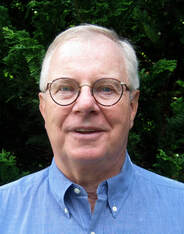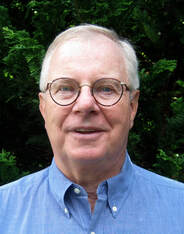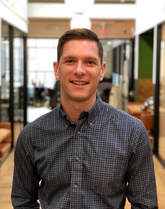 Peter Gow Peter Gow “I (we) wish to acknowledge this land on which the University of Toronto operates. For thousands of years it has been the traditional land of the Huron-Wendat, the Seneca, and most recently, the Mississauga of the Credit River. Today, this meeting place is still the home to many Indigenous people from across Turtle Island and we are grateful to have the opportunity to work on this land.” This invocation, known officially as the “Statement of Acknowledgement of Traditional Land” (the British spelling of “acknowledgement” is the U of T’s, not mine), begins every official function at the university. Developed “in consultation with First Nations House and its Elders Circle, some scholars in the field, and senior University officials,” the statement grows out of truth and reconciliation efforts across Canada, and it is apparently only one example of a growing genre. I’ve occasionally written about the heritage issues that might trouble the sleep of many independent schools; creatures of their times and places, schools have hardly been immune to the influences of racism, sexism, and religious prejudice that shaped and continue to pollute North American society. But few schools have taken a look at the very land on which they sit—land whose history prior to European colonization is sometimes obscure but almost never unknowable. As any school that has found itself on the losing end of an eminent domain decision knows, land “ownership” is never pure and seldom simple; multiple jurisdictions (village, town, county, state, nation) have potential legal claims, for example, upon the land where sits the house that I like to think that I own. But before there were Norfolk County and the Commonwealth of Massachusetts, there were millennia of native peoples with their own complex social, cultural, and political histories, and being reminded of this enriches my appreciation for those histories. It also deepens my uncomfortable understanding of the ways in which these lands became owned by white European settlers and strengthens my desire and will not to be part of oppression in my own time. It happens that one of my kids is working on a doctorate at Toronto, focusing on literature of oppressed and underrepresented cultures, largely in diaspora. He told me about the university’s statement during a conversation about “Pocahontas deniers”—an apparently real slice of our population who apparently don’t believe that Native Americans actually existed, or even that indigenous people exist in North America today. I want to deny these deniers, but apparently they are out there, like so many other deniers of one sort or another, in their willful ignorance. So why don’t all our institutions have their own statements of acknowledgment of “Traditional Land”? You might call such a notion fussily politically correct, but schools, at least, have a purpose to be purveyors of truth, especially about themselves. What good might come of making the effort to trace the past possessors and users of the land before it became the farm or estate or other disused institution where now lies your school? What good might there be in exploring and promoting an understanding of “Turtle Island” as a construct that predates (and interrogates in a powerful way) “manifest destiny”? What good might come of creating a course or a club or a committee of students who might reach out to build connections with the contemporary indigenous neighbors and cultural bodies that exist everywhere in North America? What benefit might there be in refuting the deniers and those who believe or have been taught, as I sort of was more than a half-century ago, that Native Peoples mostly bowed off history’s stage at roughly the beginning of the 20th century—casino gambling, Western movies, and photogenic rituals notwithstanding? There are readers who will say this seems like a small and trivial point to be making against the backdrop of all the work we have to do as educators. But this concept aligns not just with general educational ideals about light and truth but also aligns quite specifically with, say, the Independent Curriculum Group’s Principles: “Congruent with the mission and values of the school;” “High intellectual and ethical standards;” and “Inclusive and just.” It even requires the creation of understood connections between “history” and the real lives and real school work and play spaces of students and teachers—the New Relevance, of which I have written elsewhere, made manifest. As colleges struggle publicly and privately with legacies of slavery and racism, a great many independent schools these days are facing their own obligation to “truth and reconciliation” around past issues of abuse. Truth will out, it seems, so why not look at every aspect of one’s history that might need some explaining and some reconciliation? I believe that sooner or later, like colleges, schools are going to have to face even more troubling aspects of their own histories. We have shied away so far, perhaps in the belief that these things are not for children, but it strikes me that developing a statement around the very land a school occupies might be a good place to start. It’s a way to send a message that we are really prepared to talk about—and do something about—the hard stuff.
0 Comments
 Peter Gow Peter Gow The daily news worries and sometimes frightens us, and I believe that schools and educators must make 2018–19 a year in which concepts like RELEVANCE, REAL-WORLD, FACTS, and CRITICAL THINKING take center stage in every classroom. The world is moving daily into what feels like a deepening crisis, and our schools and their leaders and teachers must engage with the immediate challenges of the day to prepare students for an uncertain future. Urgent questions fill the air, and no sentient person of any age is not hoping for answers that embody principles of equity, justice, security, and peace. Your students care about these questions, and schools have a civic and even moral duty to approach them. And yet, are we too caught up in the exigencies of the day and traditional notions of school learning to find the courage to take them on? How and where, for example, is your school addressing in its classrooms
Students must have real information and understand multiple perspectives on the real issues of our time along with the underpinnings of skill and basic content knowledge that we traditionally see as the chief fodder of K–12 education. And we know that the way to most deeply engage kids is with material that relates directly to their own experiences and concerns. If you, like me, are a Baby Boomer you remember the immediacy of issues around nuclear war in our childhoods, and especially the palpable and painful fear we felt in the adults around us as the Cuban Missile Crisis unfolded. Don’t our students deserve the opportunity to gain understanding and expertise about the issues that truly imperil our planet again in 2018? How can each of your departments or disciplinary teams, each of your divisions, and even your co-curricular programs begin to focus on what’s actually happening in the world as they design learning experiences based on your school’s own mission and values and designed for your very own students? If you are a school leader, how can you provide your faculty the time and other resources—including permission to be relevant, to respond to issues and questions that arise in those “teachable moments”—required to offer a program that is truly responsive to the challenges of our time? It’s not crazy or educationally unsound for you as a school leader to allow and in fact encourage even those teachers deep in the content minutiae of a “college prep” curriculum to stop and address the real concerns of students about their communities and their world. If this is hard or if teachers feel unprepared to take on this kind of challenge, get your best minds together and figure out how to create supportive professional development in this area. A year ago I wrote about what I called the New Relevance, which I described as making “the lens of experiential reality” essential to our approach to teaching and curriculum design, to “the way we teach everything.” To me this now seems more essential than ever.  Brad Rathgeber Brad Rathgeber As educators, one of our primary jobs is to create environments that challenge students, encouraging them to step out of their comfort zones and then providing the help, support, encouragement, and guidance they need to find success. That’s true for both the English teacher who assigns a Dostoevsky novel for the first time, and the swim coach who challenges a student to compete in a 400 yard individual medley for the first time. It’s also true when we ask students to take an online class for the first time. It’s uncomfortable. Sometimes, this discomfort manifests itself as the student saying, “Online classes aren’t for me.” What they are really saying is that they need help navigating an uncomfortable experience. Just as the English teacher doesn’t assign Dostoevsky right at the start of the year (let’s ease into Russian literature with some Pushkin, maybe), and the swim coach doesn’t challenge the student to swim a 400 IM (without having done a 100 and 200 IM first), online teachers can’t start with the assumption that students are ready for an online class just because they signed up for one. So, how do you prepare students for this new type of learning? There are three key elements: connection, choice, and comfort. Immediately, an effective online course connects students to their teacher and to their classmates, in order to build trust and break down any preconceived notions that the online learning space is impersonal. This happens in a number of ways. Students and teachers alike create a graphic journal to introduce themselves and share their personalities (think pictures, favorite YouTube clips, songs, text, etc.). They see each other in video discussion boards. Most importantly, they meet one on one with their teachers. When students meet with their teachers one on one, they have a conversation about the student’s goals for the year, immediately giving students a way to choose their own path to grow. Students also talk with their teachers about their learning profile, noting strengths and areas of challenge and discussing approaches for learning and applying course content. In collaboration with teachers, students learn about sustaining a growth mindset and the power of “yet.” Another purpose of students meeting with their teachers is to become comfortable with their teacher. We create other elements in the orientation and first week of the course to help students become comfortable in the online space: student expectations are clear and explicit; course modules follow a regular and reliable flow, ensuring that students can’t “get lost” or miss an assignment; help and instructional videos abound; support and help are always visible for students, both from their teacher and for any technology needs. We lead students through a series of opening assignments, allowing them to “get their feet wet” in the online space when the stakes are low, to prepare them for the work ahead. Focus on connection, choice, and comfort does not mean that every student will feel that she is ready for the challenge of online learning, though. There are extra supports necessary for some students regardless of how we prepare them for the experience -- just like there are at a face-to-face school. I’ll write about that next month. |
Don't miss our weekly blog posts by joining our newsletter mailing list below:AuthorsBrad Rathgeber (he/him/his) Archives
July 2024
Categories |

 RSS Feed
RSS Feed